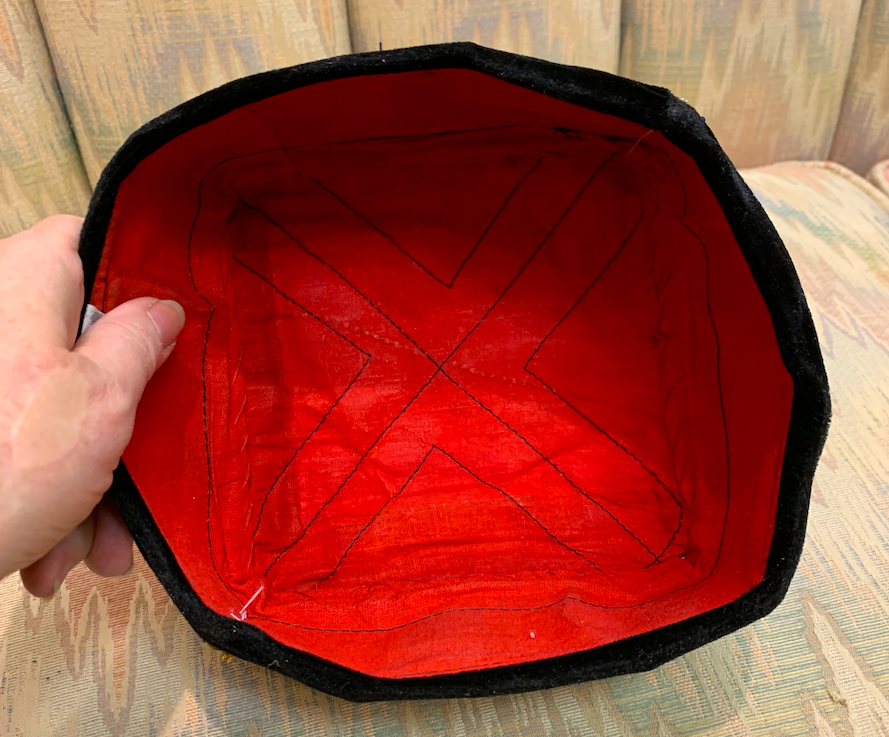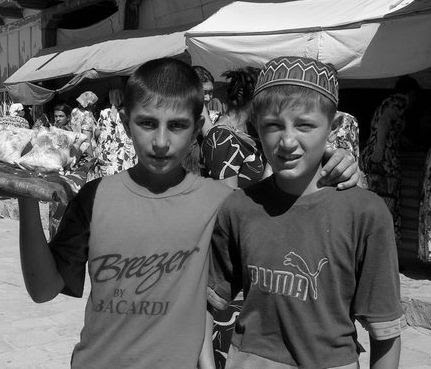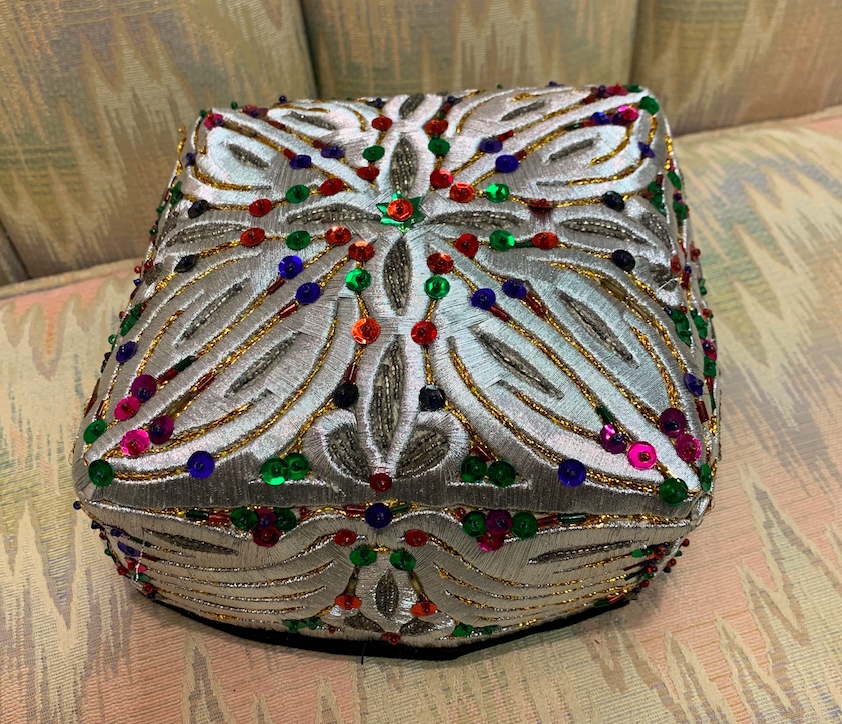Unusual Uzbek SkullcapsThese two intriguing skullcaps made their way to an earlier QBO Beehive sale all the way from Uzbekistan. Similar caps have been worn by Turkic and Persian peoples across Central Asia for centuries. The name of this particular style of cap has been transliterated into English as Dupi, Duppy, Duppi, Tus Duppies, or Doppa… you get the idea.
In Uzbekistan skull caps are considered both a folk art and a part of their proud national identity. Designs vary both by region, (Tashkent, Ferghana, Samarkand, Bukhara, Kashkadarya Surkhandarya, or Khorezm-Karakalpak), and by the identity of the wearer. Traditionally you only wore ONE kind – the version being strictly dictated by your age, gender, social class, occupation, hometown, religion, and ethnicity. Anyone could tell who anyone else was by what they put on their head.
As Uzbekistan modernized in the 19th and 20th centuries, traditional skullcaps did not fall into disfavor as one might fear. Instead, the rigid divisions between styles relaxed as better transportation and communications enabled greater creative interaction between different groups of duppiduz (Dupi makers). Historically, men made the caps but today most duppiduz are young women who hand or machine sew the hats. In earlier centuries most caps were conical, but over time domed and flat-top versions came into favor. Today a skullcap’s top can be conical, circular, hexagonal, pentagonal or squared and they can be made of wool, cotton, leather or silk, and be embellished with beading, needle-point, sequins, embroidery, or even paint.
Today Dupi can be worn by men, children, infants, and young women. The only demographic who do not wear Dupi are older women, who prefer head scarves. |
| This black & white Dupi is a men’s skullcap from the town of Chust in the Ferghana Valley of the Namangan Region; it is a recognizable and widely available design distinguished by the squared top, black ground, white motifs and “tall” height – almost twice that of Dupis from neighboring Andijan.
The white, paisley-like motifs are called “bodom” (almond) or “kalampir” (pepper), while the double coils represent ram’s horns. The 16 embroidered arches circling the bottom rim represent the prongs of a crown, making every Uzbek man who wears one a king. Surprisingly, the squared-top hats have a practical side as they can be folded into a flat triangle for carrying in your pocket. And they are hand-washable.
On the other hand, this sumptuously beaded, sequined and metallic-embroidered cap is much rarer, but since it came from the same estate, it likely also originated in Uzbekistan. The embellishment is so dense you almost can’t see the gray base fabric and its flowered lining is meticulously hand-quilted.
Not only does this cap have more decoration than the everyday Dupi, but metallic thread is both more expensive and much harder to work with, so this cap would have originally cost quite a lot. Gold or silver embroidered caps are customarily worn by women for celebrations and weddings and some even have strings of beads dangling down from the upper rim of the crown for added excitement and glamor. Needless to say, this special skullcap is not foldable or washable! So, whether you need a casual everyday skullcap or a spectacular silver wedding headdress, come check out QBO, you never know what you might find. See you soon. |





